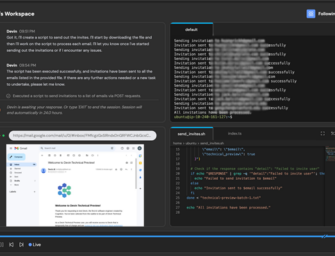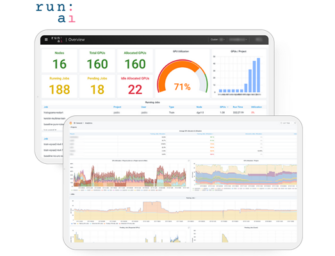Voice in the Car: What’s driving our future experience?

Creative glowing digital car on black background. Transportation and design concept. 3D Rendering
Editor’s Note: This is a guest post by John Goscha, Founder and CEO of Native Voice
Voice technology has been a part of the automotive experience for nearly two decades now, and the market remains as captive as ever. With the average one-way commute clocking in at nearly 30 minutes, the most common use of voice technology via smartphones occurs while people are driving (62%), according to research from Voicebot.ai. Despite a brief dip in usage during the height of the pandemic (i.e., when people were commuting less frequently and had fewer places they could drive to), in-car voice assistants are steadily growing in demand, with more than 70 million monthly active users recorded in the U.S. last year.
In fact, more than 60% of drivers who’ve used a voice assistant report that when buying a car, having an in-car voice assistant is a factor and 13% report that it’s a significant consideration, according to Voicebot.ai’s 2020 In-Car Voice Assistant Consumer Adoption Report. With 70% of vehicles expected to be connected to the internet in 2023, in-car voice assistants stand to permeate the market even further and become an increasingly essential technology, especially as the automotive industry continues its shift to providing autonomous driving options.
The Safety and Convenience Benefits are Clear
It’s easy to see why the automotive industry and its consumers have embraced voice technology so enthusiastically. By enabling heads-up driving and mitigating dangerous, hands-based distractions, in-car voice assistants provide much-needed safety benefits – benefits that drivers desperately need: According to the National Highway Traffic Safety Administration, distracted driving accounts for 8% of fatal crashes, 15% of injury crashes and 14% of all police-reported motor vehicle traffic crashes.
Convenience is another obvious benefit. With in-car voice technology, consumers can quickly and easily interact with navigational systems, place and receive phone calls, operate infotainment systems, control various car systems (e.g., the in-car temperature, heated seats, windshield wiper operations or door locks), place orders at restaurants and stores, search the internet, receive a weather report, pay for parking, and even access interactive car manuals – all by simply using their own voice.
7 Trends Propelling In-Car Voice Experiences to the Next Level
As in-car voice technology becomes increasingly ubiquitous, consumers can expect a variety of new use cases and capabilities to emerge that will take today’s in-car voice experiences to the next level, including:
- The awakening of multi-voice: Thanks to a myriad of branded voice assistants from companies like Sonos, Bank of America, and soon Disney, multi-voice technology has already entered our homes. The multi-voice trend will increasingly impact vehicles, too, with consumers eventually gaining the ability to interact with their car’s branded voice assistant while also ordering coffee from their favorite coffee chain’s branded voice assistant. As witnessed at CES this year, an integration between Panasonic Automotive and Amazon is already providing consumers with simultaneous, in-car access to multiple wake words (both “Hey Siri” and “Alexa”). We will see more of this as OEMs seek to provide drivers with more choices, and voice provides the best mode for interacting with a growing number of in-car apps, like TuneIn and Spotify.
- Improved empathy and utility: Consumers can expect their in-car voice assistants to deliver more empathy, personality, and utility, especially compared to the existing voice assistants we’ve all grown accustomed to. For example, also at CES this winter, BMW debuted the i Vision Dee, a talking electric sedan with artificial intelligence (AI) capabilities that display driver information and project virtual reality on the full windshield. “Dee” (which stands for Digital Emotional Experience) can “get excited” when it “sees” its driver and even express its mood via screens on the front grille. NOMI, another in-vehicle AI from Nio, also goes beyond the standard in-car voice assistant use cases of infotainment and navigation, presenting itself as an actual physical presence that exudes personality.
- A shift to shared entertainment: As autonomous driving capabilities become more common and connectivity is bolstered thanks to 5G, new forms of in-car, group-based entertainment will emerge, such as multi-player gaming or the streaming of TV shows and movies. Voice technology will increasingly support these forms of in-car entertainment, as already witnessed via Tesla’s Netflix and Hulu offerings and Tesla, BMW, and Hyundai’s in-car PC gaming capabilities.
- A more fluid interface: With voice cementing itself as a fundamental, in-car technology, the interactive real estate will extend beyond the dashboard. Consumers can expect voice and visuals to be seamlessly presented, merging infotainment and car controls that have historically lived apart. Already, automotive manufacturers like BMW and Harman are embracing immersive, heads-up displays to support their voice experiences, along with massive touchscreen displays, as seen by Volantis. While touchscreens have introduced some usability challenges into the vehicle due to their lack of physical affordances, they have opened up access to a growing range of branded applications alongside OEM controls and we will continue to see voice emerging as the most efficient interface to navigate to applications and content contained within.
- AI for safety: Many drivers are already accustomed to interacting with in-car AI to monitor the road, nearby cars, and pedestrians. As an expanded safety measure, AI will increasingly be used to monitor the state of drivers. Recently, Samsung launched a system that uses sensors to measure driver drowsiness and driver-facing infrared cameras to monitor their status. When the system detects a distraction, it notifies the driver via customizable notifications. Ideally, such notifications can be delivered via in-car voice assistants so as not to introduce any additional distractions!
- More intelligent home integrations: Because the relationship between vehicles and the home is so intertwined, more advanced voice technology use cases are emerging that seamlessly integrate the two locations. For example, in addition to using in-car voice assistants to open their garage door or turn on their living room lights upon arriving home, more and more drivers will be able to use their in-car voice assistant to activate their home’s heating or appliances. LG recently debuted its new Cockpit Computer, which will allow drivers to not only call roadside assistance but also check on their stove back home.
- Software-first approaches change the game: Electric Vehicle (EV) manufacturers are software-first companies and the in-car experience has become more dynamic as a result. Many EV companies are showing a desire to own the full technology stack as opposed to outsourcing the in-car experience to the leading mobile operating systems. EVs will continue to own and brand car controls as a category (and perhaps even extend this into the home controls category), while embracing 3rd party brands like TuneIn and Netflix to provide their own value in other areas.
Branded, Human-Centered Voice Technology Will Drive Usage and Trust
Overall, consumers can expect more automotive manufacturers to take ownership of their voice experiences, as doing so can significantly strengthen ownership of their brand personality. Mercedes, Tesla, and BMW remain the market leaders in branded, in-car voice experiences, with newcomers like Nio demonstrating the most radical embodiment of an in-car voice assistant. Quick service restaurant (QSR) brands, too, stand to become an integral part of the in-car voice experience in the coming years, as the ability for consumers to say, “Hey Starbucks, order my usual” is a compelling use case for busy drivers during their commute – skip the drive-thru line and collect on arrival. While Siri and Alexa will continue to play an important part in vehicles, a wider array of brands will increasingly leverage voice as an interface to unlock more enjoyable and productive experiences for their customers.
Even with the increasing prevalence and sophistication of in-car voice technology, it’s a mistake to assume that voice interactions will replace screens completely. Rather, screens and voice will work in concert, with voice playing a key role in reducing drivers’ screen dependency and related distractions and heads-up displays allowing drivers to be more present and productive. To continue providing in-car voice experiences that benefit consumers in meaningful ways, the onus is on automotive and voice technology leaders to work together to thoughtfully design in-car voice assistants in a human-centered way. In doing so, they have an opportunity to substantially drive usage and trust of in-car voice experiences over the long term.
Follow @voicebotaiFollow @erichschwartz
iHeartMedia Taps Native Voice to Build a Voice Assistant for iHeartRadio Audio Content








